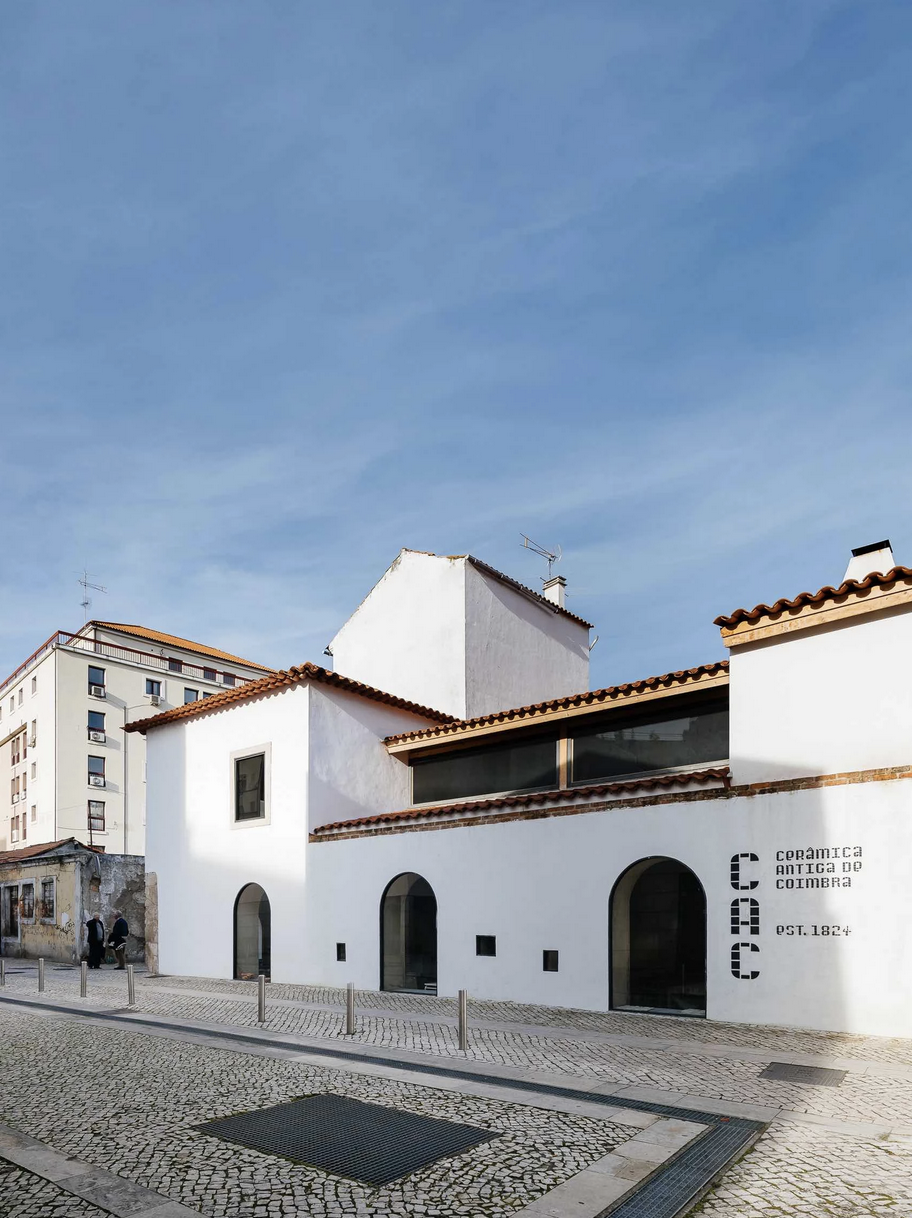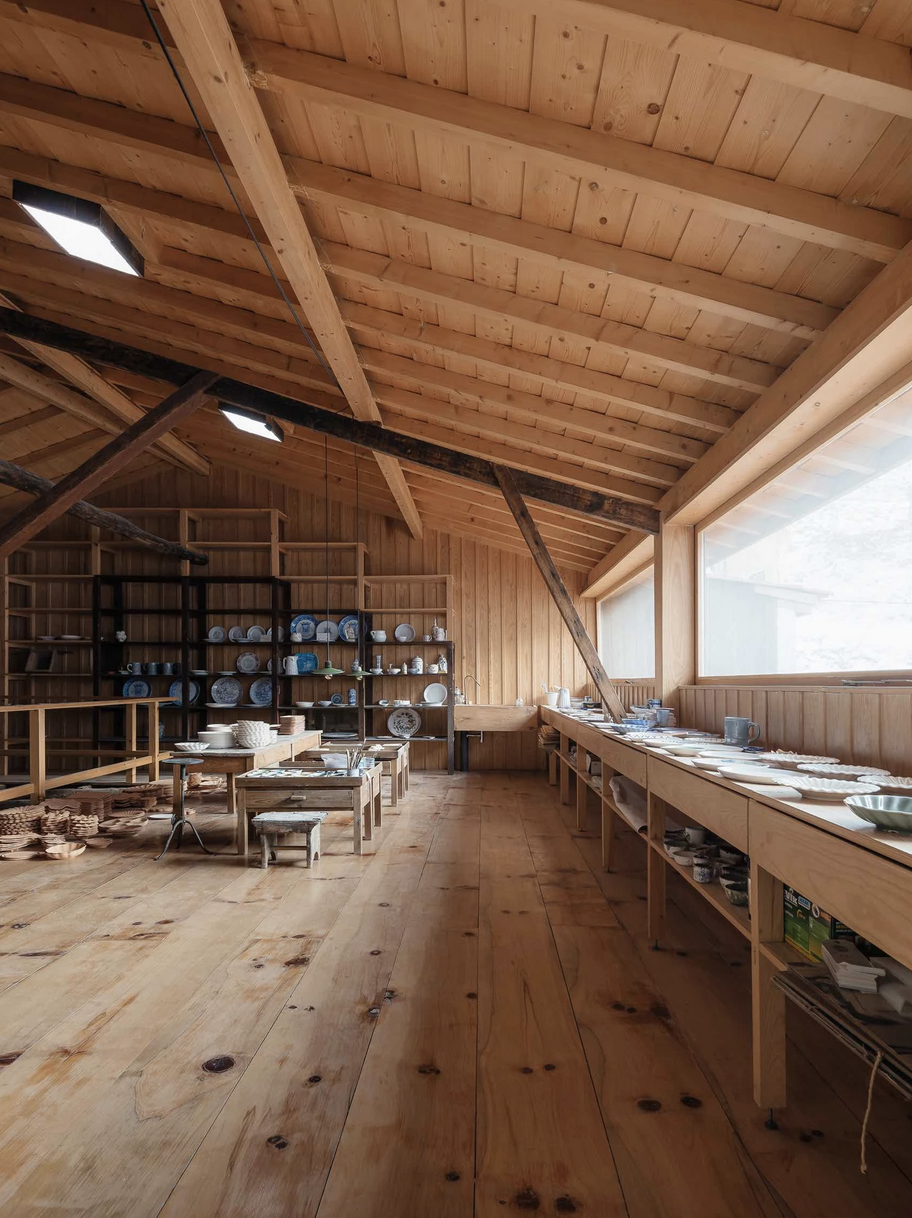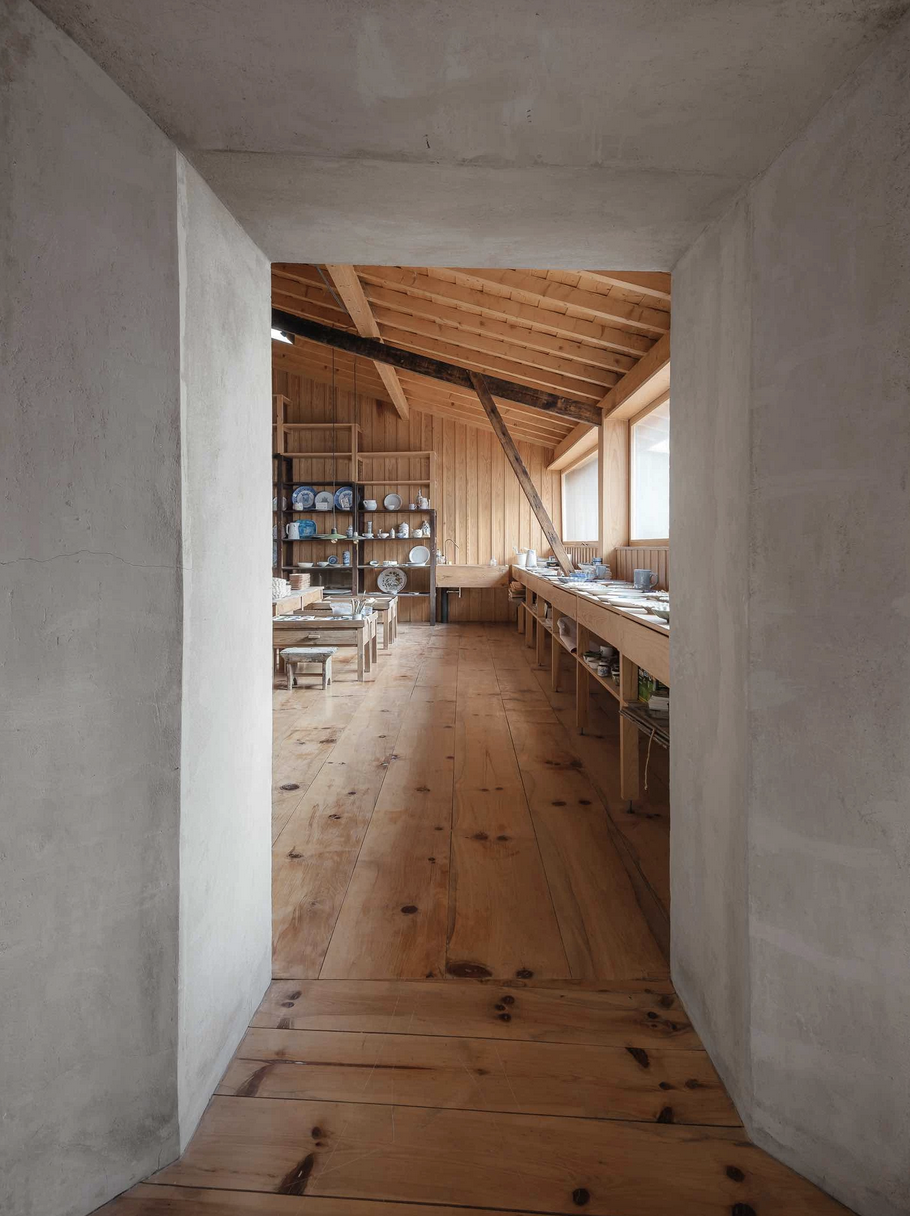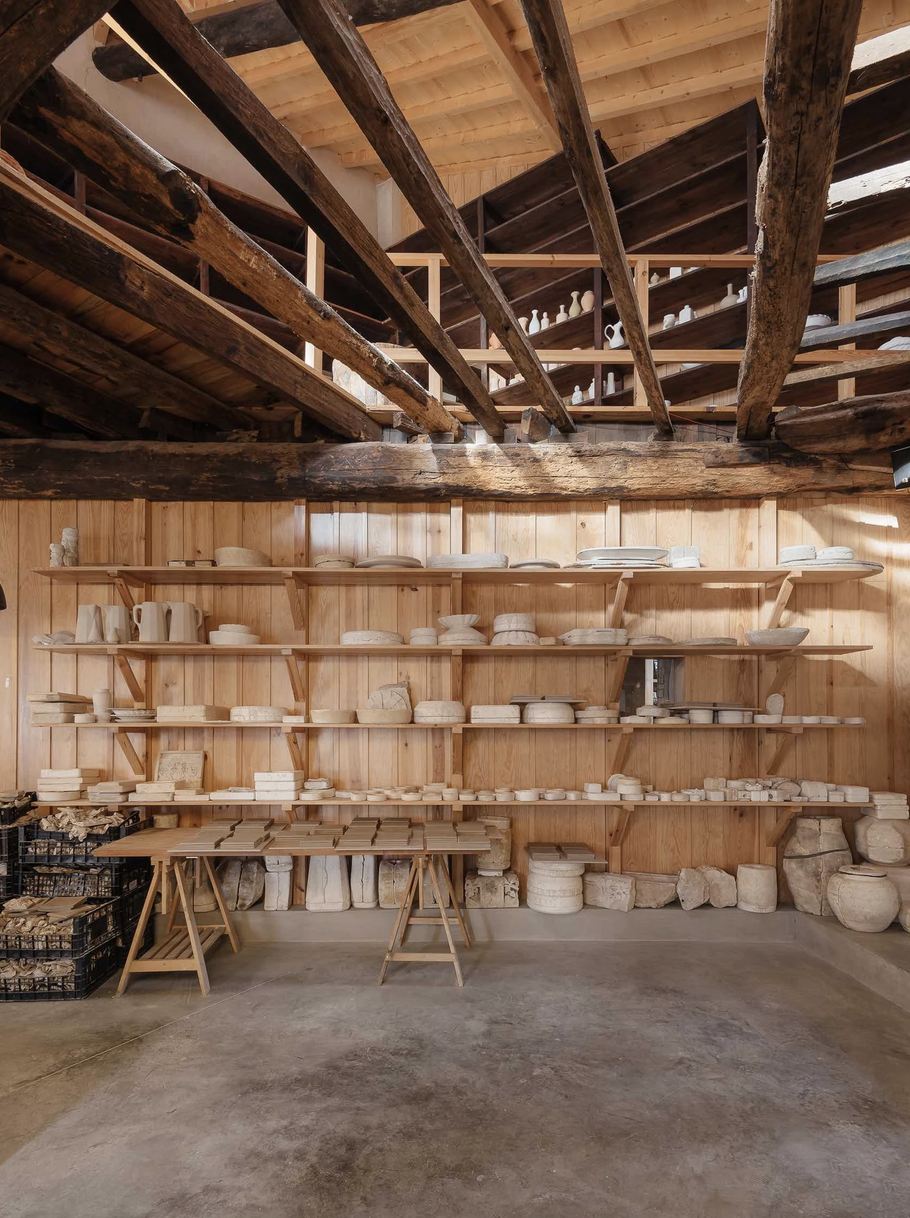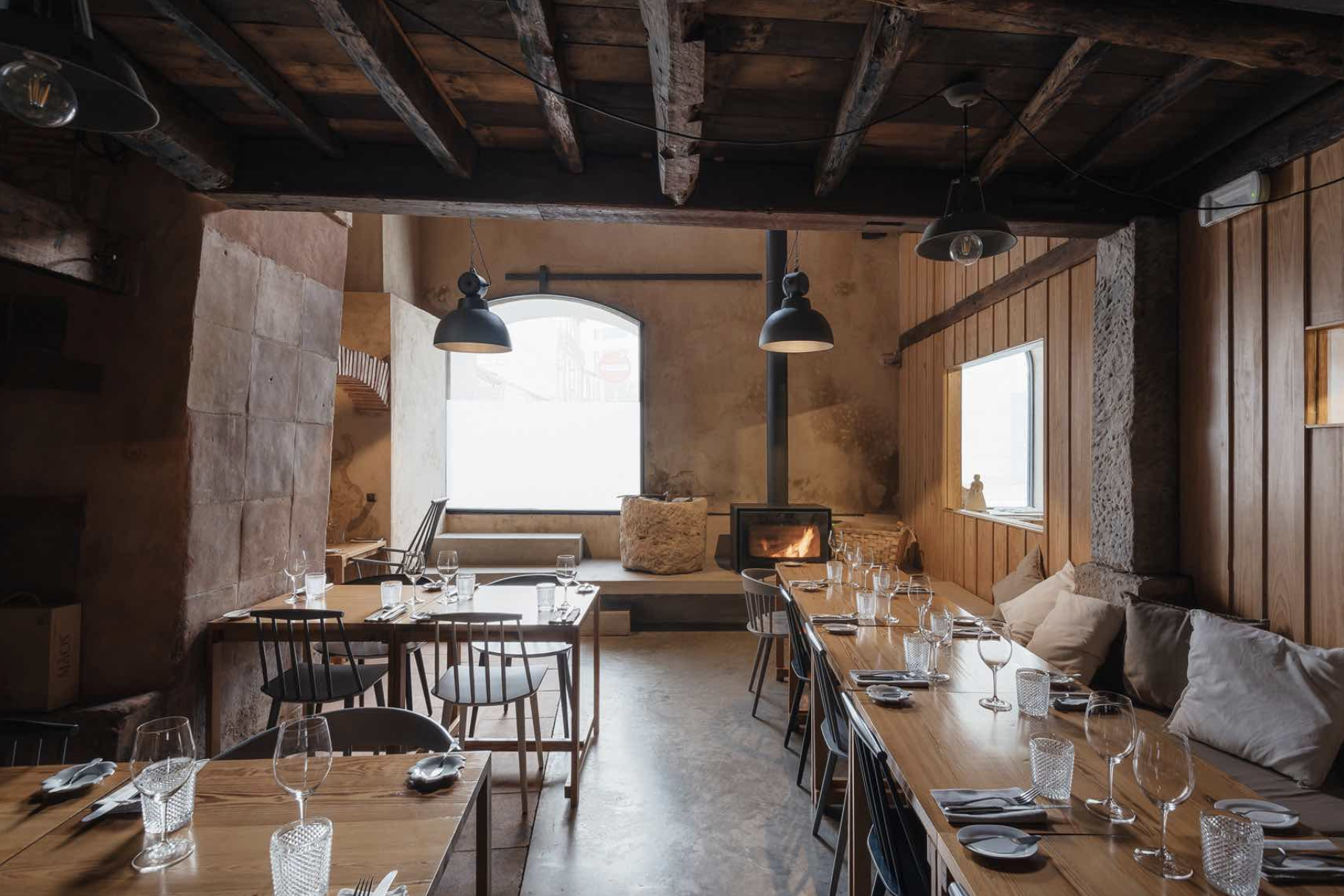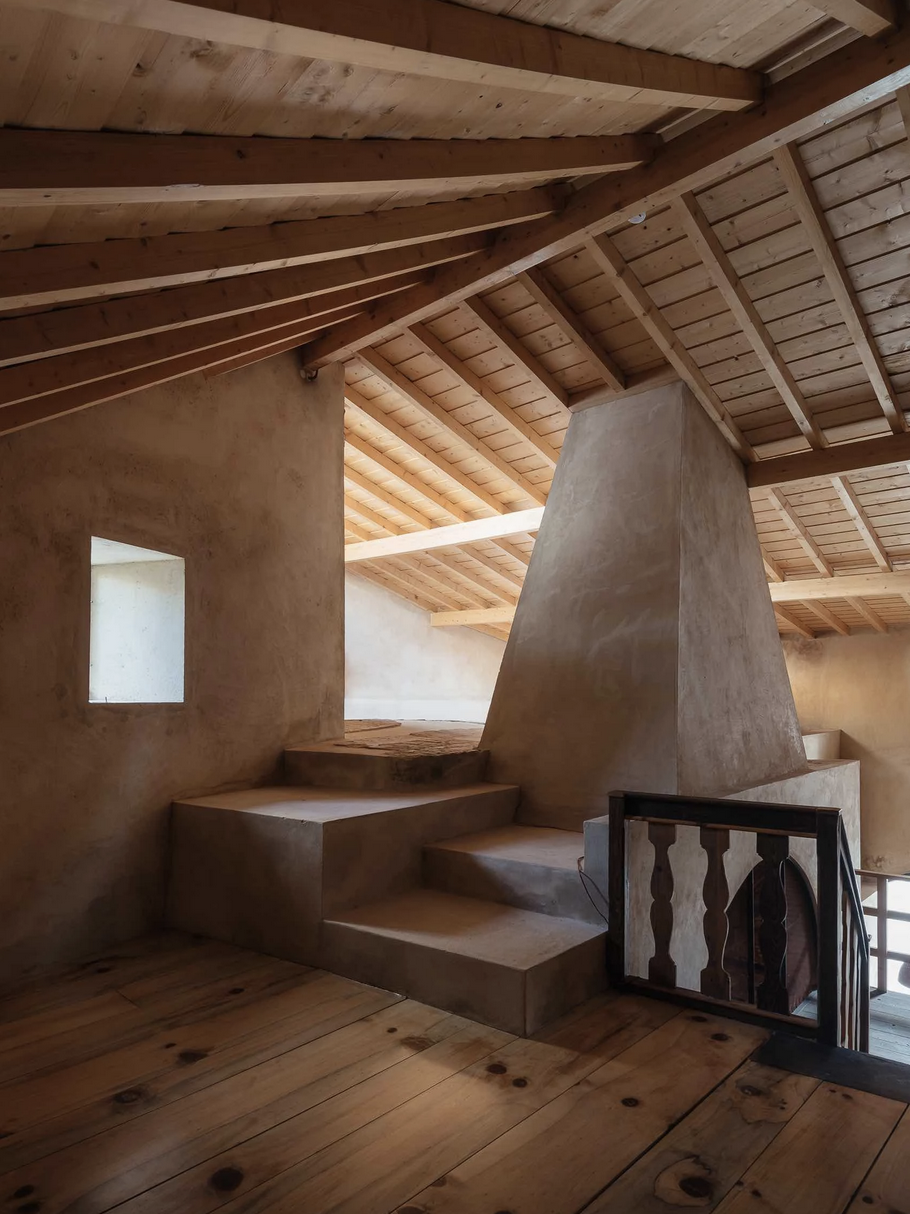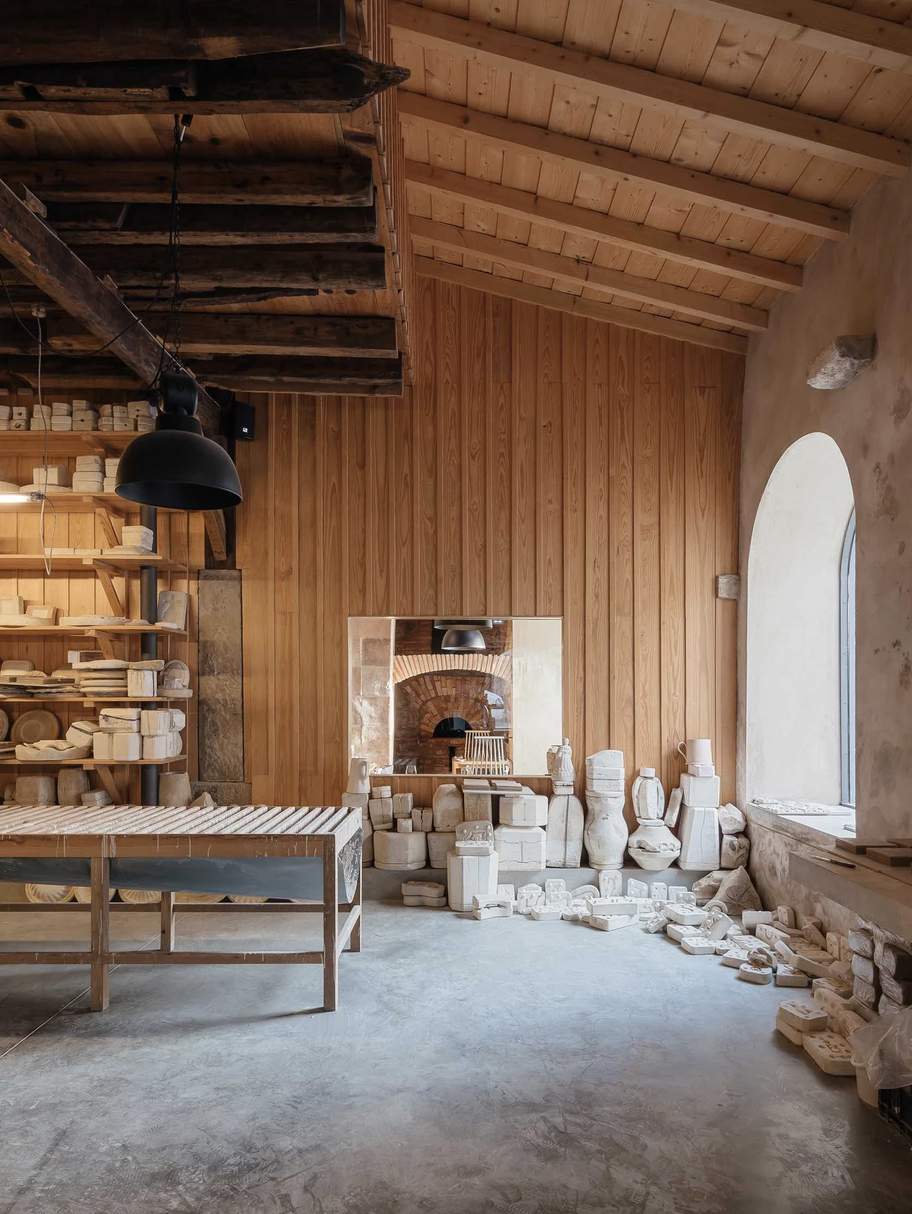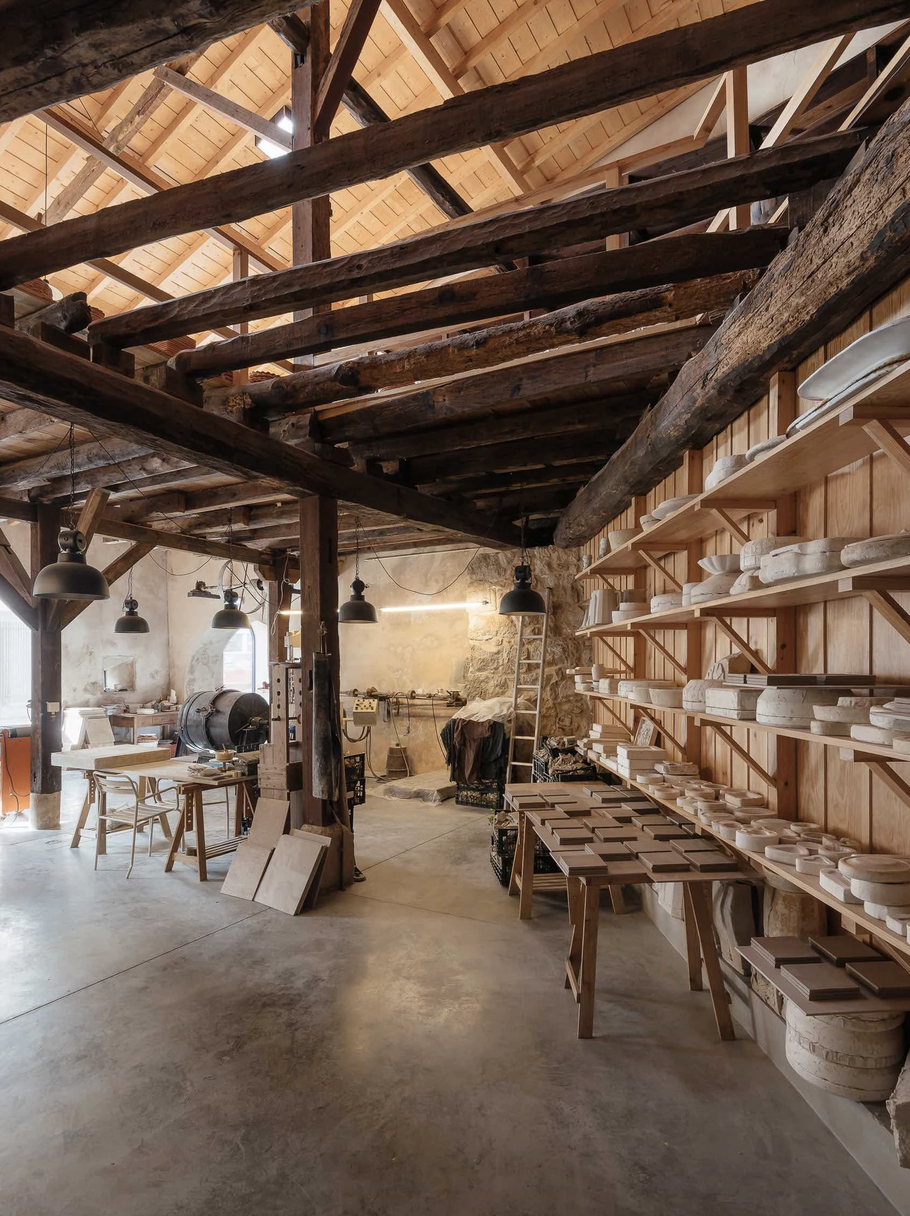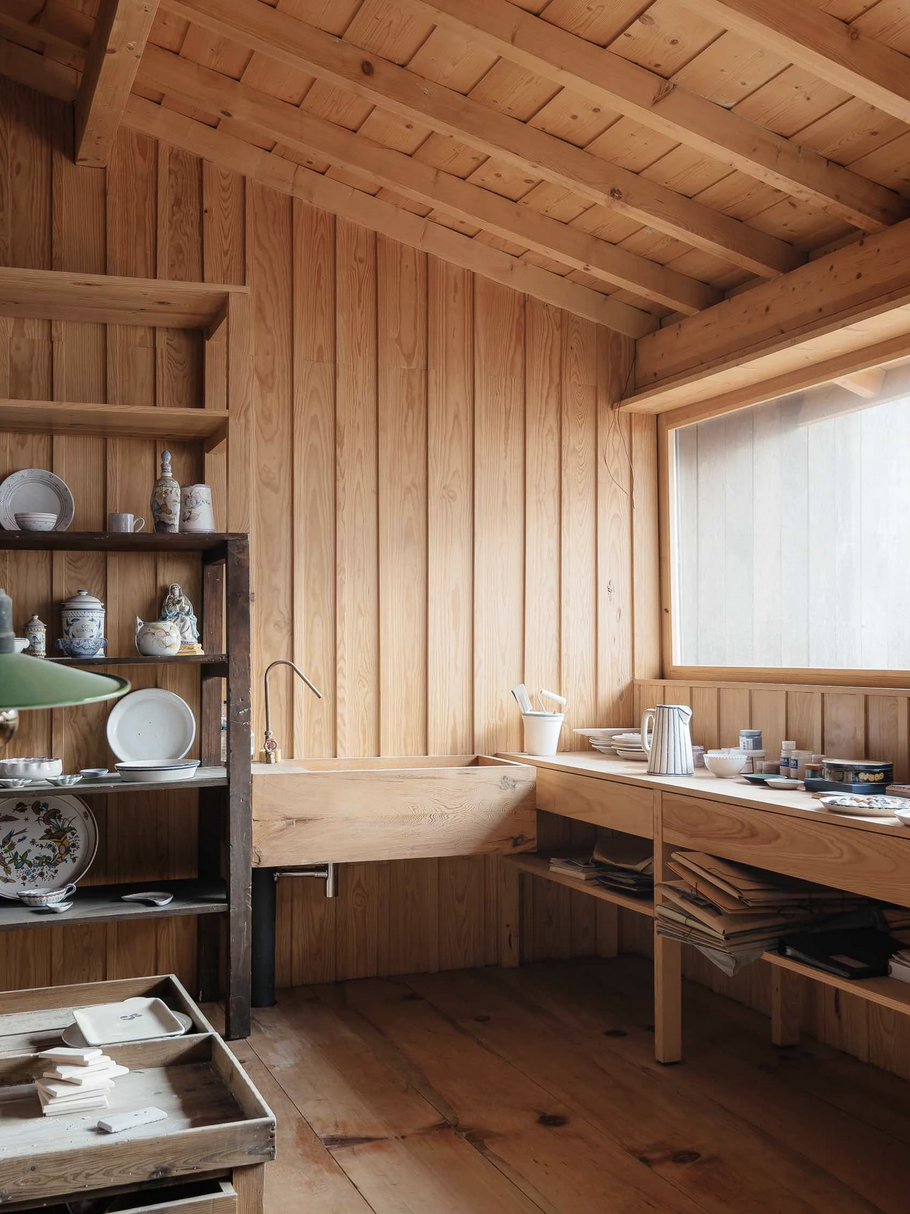Old Ceramic Society
Old Ceramic Society of Coimbra
The manufacture of faience in Coimbra dates back to the 17th century. With the refurbishment of the University of Coimbra, begun in 1773 by the Marquis of Pombal, a vast set of production units emerges that will give rise to a potter's neighborhood in the center of the city. This factory is the last testimony of this more extensive set of extinct units and is located in urban and consolidated territory in the downtown of Coimbra.
Supported by the archaeological study, Luisa Bebiano Arquitectos and Atelier do Corvo understood that the building underwent many changes and overlaps over time, passing from olive oil mill to pottery (still in the 18th century, 1793). This building is fully constructed with self supporting exterior stone walls, structure, floors and walls in national pine wood. The non-alteration of the volume of the building (so close to Sofia Street - part of the UNESCO World Heritage) was added the option of maintaining the maximum of structural elements (carefully removing overlapping elements), often relocated, restoring most of the building and inserting new elements when necessary. The typology of the ovens (18th century) corresponds to the representations that integrate the studies of Char-les Lepierre. The chamber is of square plan and the furnace is of ribbed and perforated vault, constituted by massive ceramic elements and structurally self-supporting. The conservative and restorative approach was based on a philosophy of minimal, non-intrusive intervention with the ultimate goal of musealization, allowing a constructive and functional interpretation of the whole, allowing to read the marks of the work. The architectural solutions found underline the continuity between times, but without ruptures, having in this attitude a conscious erasure of the differentiating gesture, wanting to mark a certainty in the ephemerality of our time, as was marked (and thus valued) the ephemerality of who built that place , so clinging to memories and experiences that now seem interposing.
Photography by Eduardo Nascimento from Do Mal o Menos.


